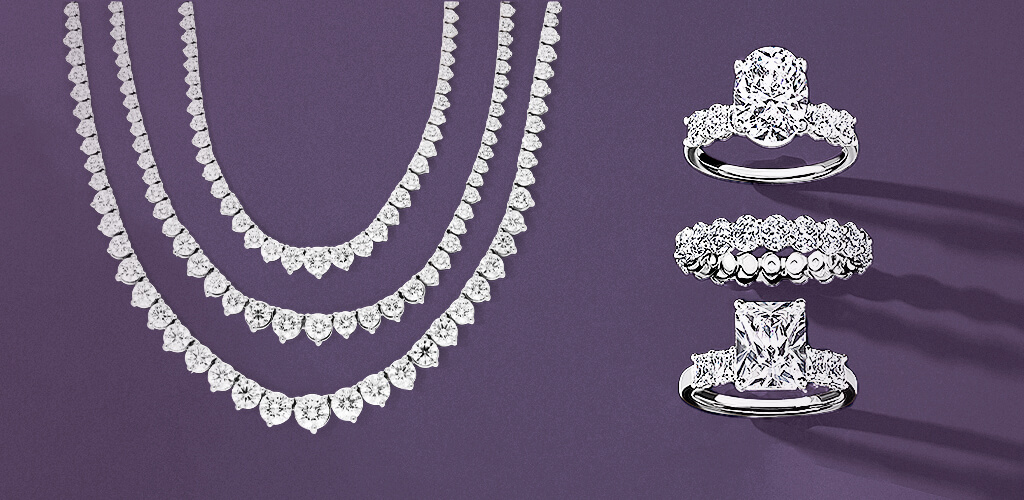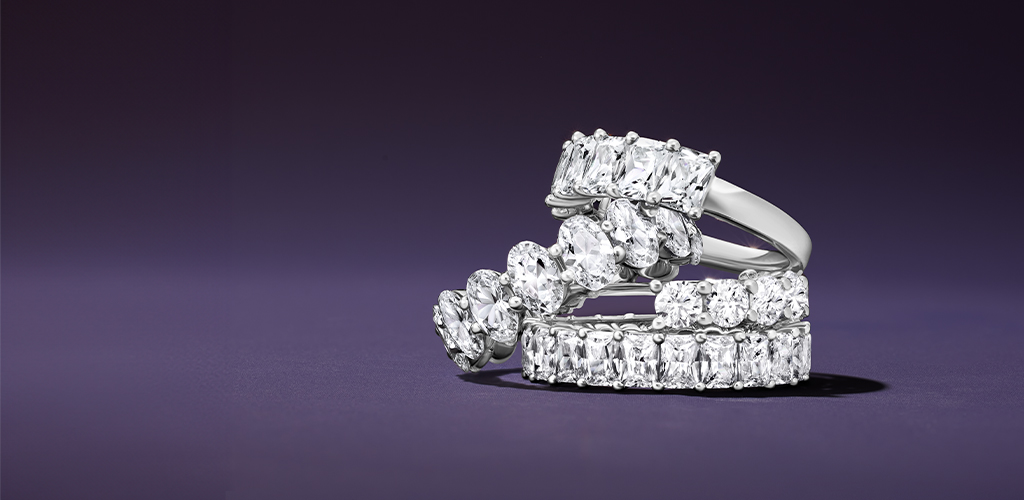
While white gold starts out looking bright and silvery, it may not stay pure white forever. Over time, you might notice your jewelry adopting a slight yellow tint. This change isn’t a sign of poor quality; it’s a natural effect of the metal’s wear and tear.
But why does it happen? And what can you do to avoid this and keep your white gold jewelry looking pristine? We’re here to give you the lowdown with our best tips and tricks!
Initially, white gold is created by alloying yellow gold with white metals such as palladium, nickel, or silver to achieve a desirable silvery appearance. It is also typically plated with rhodium to enhance its bright white finish. As this plating wears off over time, the yellow color of the natural gold becomes more visible. Several factors can accelerate this process:
The frequent contact with your skin and various surfaces can erode the rhodium layer, slowly revealing the yellow gold beneath.
Chemicals in everyday substances like lotions, perfumes, and chlorinated water can accelerate the degradation of the rhodium coating.
Your skin’s natural acidity can also contribute to the rhodium layer wearing away quickly.
Time itself plays a role; even with minimal exposure to harsh elements, rhodium will eventually wear off.
If you prefer jewelry that retains its color and luster without the need for frequent maintenance, consider options like:

Choosing between platinum and white gold depends on several factors:
Platinum: The metal’s natural silvery-white sheen remains consistent over time, which means it doesn’t require any rhodium plating to maintain its color. This attribute makes platinum jewelry a low-maintenance choice relative to white gold. It’s especially beneficial for those who prefer jewelry that retains its appearance without frequent upkeep.
White Gold: While white gold is initially plated with rhodium to enhance its whiteness, this coating can wear off, exposing the natural yellow of the gold alloy beneath. As a result, it typically requires re-plating every few years to restore its white color. This maintenance can add to the overall lifetime cost of white gold jewelry, making it a crucial consideration for those who prefer minimal upkeep.
Platinum: This metal is not only heavier but also more durable than white gold. Its density makes it less susceptible to scratching and deformation. Over time, platinum develops a patina, a matte finish that many find appealing as it adds a vintage charm to the jewelry. However, this patina can be polished to restore the original shine if preferred.
White Gold: Though strong, white gold is softer than platinum and more prone to scratching. It is also typically alloyed with other metals like nickel or palladium to increase its strength, which is necessary to compensate for its natural softness. The durability of white gold can be adequate for everyday wear, but it may require more frequent repairs and maintenance to keep it looking its best.
Platinum: The higher cost of platinum is largely due to its rarity and density. Platinum is more rare than gold, which makes it a more exclusive choice. Additionally, because it is used in a nearly pure form (usually 95% pure), more of the metal is required to make a piece of jewelry compared to white gold, which is typically 75% gold (18 karats) or less. This higher material volume contributes significantly to the cost.
White Gold: Generally less expensive than platinum, white gold offers a more budget-friendly alternative while still providing the look of a precious metal. The lower cost also reflects the fact that white gold uses less of the pure gold alloy compared to the amount of platinum used in similar platinum pieces. However, the ongoing costs of maintenance, such as rhodium plating and possible repairs, should be factored into the total investment over time.
If your white gold jewelry has lost some of its brilliance, there are straightforward solutions to restore its original glow:
On average, you can expect to pay between $30 and $60 to replate a simple white gold ring. More complex items or jewelry with large surface areas might cost more, up to $100 or higher.
Keeping your white gold jewelry in top condition through regular replating is an investment in maintaining its beauty and longevity. While there is a cost associated with this maintenance, the result is a piece that continues to look as stunning as the day you got it.
There’s no need to worry if your white gold jewelry begins to show signs of yellowing. This natural change is manageable with routine care, and the metal can always be restored to its original splendor. For those seeking alternatives, metals like platinum provide a hassle-free option with their enduring natural white color and minimal maintenance needs.
Absolutely. A professional jeweler can reapply rhodium plating to return your white gold jewelry to its bright white state.
While maintenance involves some cost, it is generally affordable, especially when considering the beauty and longevity it adds to your jewelry.
Replating white gold every 1-2 years is recommended, depending on how much wear it is exposed to.